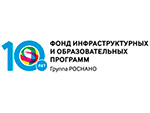In the next decade, the volume of production of thin-film solar modules in value terms will grow by about 10% per year. In gigawatts of power, the increase will be comparable to the rate shown by the rapidly developing solar power generation based on crystalline silicon.
At the same time, flexible photovoltaics, which includes thin-film power generation technologies, has a number of advantages over the more common traditional solar generation, including a lower carbon footprint. This is stated in the review of the Information and Analytical Center"New Energy", prepared on the instructions of the Fund for Infrastructure and Educational Programs of the RUSNANO Group.
The average annual revenue growth rate in the thin-film solar cell market until 2024 will be 9.8%, and the global market volume will increase from $6.2 billion in 2019 to almost $10.0 billion. Such estimates are contained in the report of the analytical company Energias Market Research. The financial performance of this segment will obviously be better than that of the manufacturers of the more common silicon solar panels in the world, the cost of which has been rapidly declining in recent years. The production of thin-film elements and modules in gigawatts of power will grow at a pace comparable to silicon panels, and their share in the total production of generating equipment for solar energy will not change, remaining at the level of 5-6%, according to ITRPV.
The first thin-film solar cells were developed in the 1970s by researchers from the Energy Conversion Institute at the University of Delaware in the United States. Quite quickly, they entered industrial production and in the mid-80s, their share in the solar energy market reached a third (in terms of capacity). Initially, the main advantage of flexible solar modules was a lower production cost compared to the more common silicon panels.
At first, thin-film modules were significantly inferior to traditional ones in terms of efficiency. However, thanks to constant research and development, the technology has been significantly improved, and now the efficiency of the most common types exceeds 21%, which is quite comparable to mass silicon photovoltaics, and in some niche areas it is approaching 30%. In addition, the production of thin-film modules is less dependent on the temperature difference and remains at a fairly high level in conditions of weak or scattered sunlight.
In Russia, its own production of flexible photovoltaics is just emerging. The flagship of this direction was the company Solartek from the Group "TechnoSpark" of the investment network of the Fund for Infrastructure and Educational Programs (FIOP) of the RUSNANO Group. Since 2014, it has been integrating the world's best examples of flexible solar panels into roofs and facades. And last year, Solartek and the Swedish company Midsummer agreed to localize the production of thin-film photovoltaics using one of the two most common technologies in the world - CIGS (based on gallium diselenide-indium copper).
Now Solartek is building for it the first plant in Russia for the production of flexible solar panels, which will be produced under the SteelSun brand at the Center for Nanotechnology and Nanomaterials of the Republic of Mordovia in Saransk.
The design capacity of the production is 10 MW per year. At the same time, Solartek intends to upgrade the Swedish technology to reduce the cost of production of cells and modules, as well as increase their efficiency, which will directly affect the competitiveness of products manufactured in Saransk.
In this area, Russia has someone to cooperate with. For example, a joint startupThe North-West Technology Transfer Center (also part of the FIOP investment network) andITMO University Flex Lab in St. Petersburg develops technologies for thin-film photovoltaics - perovskite, organic and CIGS.
Group "Technopark"
It is part of the investment network of the Fund for Infrastructure and Educational Programs, carries out a full cycle of venture construction-from the creation of startups to their sale. The field of activity of the TechnoSpark Group is hard-ware industries: logistics robotics, energy storage systems, medical high-tech equipment, diamond optics, composite brading, optical and industrial coatings, genomics, industrial microbiology, thin-film integrated photovoltaics, additive technologies, flexible electronics. It ranks first in the national ranking of the most efficient technoparks; it is included in the National Ranking of Russian fast-growing Companies "TechUspech 2019"; it is part of the Global Startup Studio Network (GSSN).
RUSNANO Foundation for Infrastructure and Educational Programs
One of the largest institutes for the development of innovative infrastructure in Russia. It was created on the basis of the law "On the Reorganization of the Russian Corporation of Nanotechnologies" in 2010. On October 22, 2020, the Foundation for Infrastructure and Educational Programs turned 10 years old.
The objective of the Fund - financial and non-financial development of nanotechnology and other high-tech sectors of the economy through the implementation of national projects, the formation and development of innovation infrastructure, the transformation of further education through the creation of new curricula and educational technologies, providing institutional support and information, contributing to the elimination of the market technological solutions and products, including in the field of end-to-end digital technology.
Chairman of the Board, as a collegial management body is the Board Chairman of OOO "UK "ROSNANO" Sergey Kulikov.

